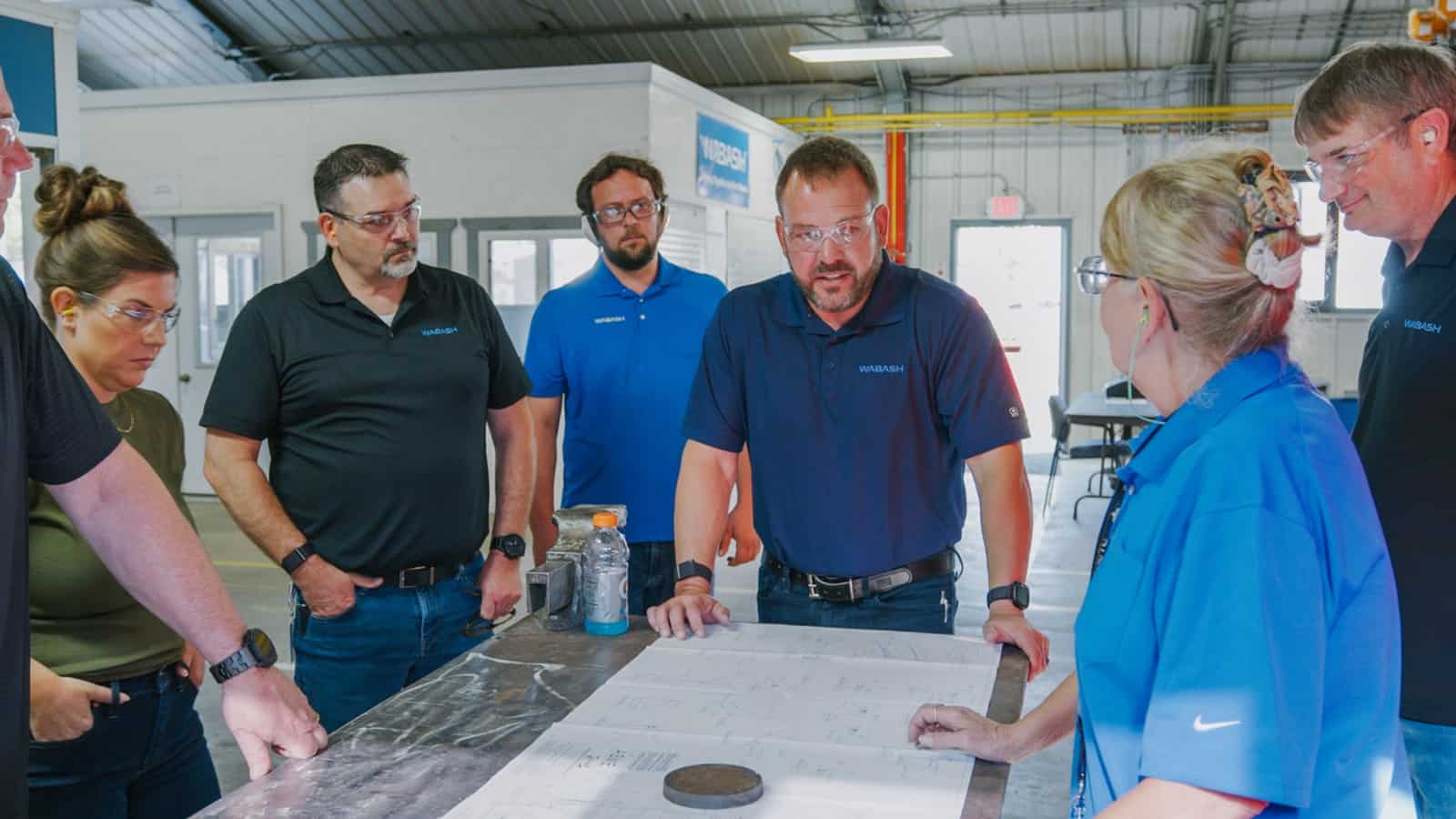How Wabash Made Innovation Its Mission

Innovation isn’t just one of many priorities at transportation systems manufacturer Wabash—it’s at the center of everything. Instead of having a traditional R&D function in the product development department, the company has reorganized its hierarchy so that innovation is considered in every major decision, from hiring to investments and more.
“It’s not possible to have innovation siloed in the engineering world; that wouldn’t allow us to achieve the scale of innovation that customers need,” President and CEO Brent Yeagy said.
As the manufacturing supply chain becomes increasingly intricate in a complex world, Wabash is staying ahead of the game. In a recent interview, Yeagy explained how the company does it.
The big picture: This “full reimagining” of the company occurred in response to broad forces reshaping the manufacturing industry, said Yeagy.
- Within the past decade, e-commerce has totally disrupted the logistics model of the previous 30 years, he pointed out.
- Meanwhile, digital technology has enhanced the speed and precision of the industry, which has also increased the complexity of its logistics needs.
- On top of that, the pandemic altered manufacturers’ thinking about lean inventories, lead times and the domestic supply chain infrastructure, sparking a system-wide transformation that isn’t over yet.
- And that’s all before we get to the possibilities of artificial intelligence, autonomous vehicles, and new sources of clean energy—all of which could bring profound and unpredictable changes to the industry.
The response: Watching these changes unfold, Yeagy and his team knew they had to take dramatic steps to keep up.
- “We restructured the entire organization away from standalone divisions,” prioritizing collaboration instead, Yeagy said. This involved “aggregating R&D and business development,” which had previously been spread out over 11 different departments.
- This shift also reflected a change in the company’s philosophy. Innovation could no longer be incremental, Yeagy determined, but had to be audacious.
The internal system: Such advances are only possible if the company has a flexible, fast-moving core of innovators who are always looking for the next opportunity, Yeagy told us.
- Instead of creating an innovation strategy that “sits on a shelf” for a year or more, Wabash updates its strategy on a weekly or monthly basis.
- While the company’s R&D and corporate development teams have strict objectives, they can also challenge the strategic direction and introduce fresh ideas—such as new technologies that might give the company an edge.
- This system also requires the right people for the job. Team members must have not only the technical qualifications for the work, but also the capacity to trust, collaborate and be vulnerable when sharing ideas, Yeagy said.
The successes: The company’s new structure has led to industry-leading innovations like Wabash’s subscription model, which allows clients to “subscribe” to a certain level of fleet capacity, instead of managing a fleet of trucks themselves.
- Wabash manages the fleet and maintenance, Yeagy explained, guaranteeing a certain capacity every day to its customers, while offering a range of rental models to suit their needs.
- In another victory for its innovative corporate development team, Wabash found a swift solution when it discovered it didn’t have sufficient distribution capabilities for aftermarket parts. It created a joint venture with a competitor company that had ample warehouse space across the country—going from the idea stage to nationwide operations in a mere six months.
Military influence: Yeagy’s service in the Navy shaped his leadership throughout the company’s transformation, he told us.
- “The military is based on a mission orientation,” he explained. “If everyone understands where we are supposed to go and why, it allows them to be agile and overcome obstacles” in the field, where the unpredictable happens.
- “Officers live to complete the mission by taking care of their people, preparing them mentally, physically, operationally,” and then allowing them to operate on their own. “We have to do that too,” he concluded.
A word of advice: Yeagy advises manufacturing leaders that truly experimental teams require “a safe place to fail and learn how to be comfortable with failure.” He admits that “It’s very hard to take a manufacturing company that doesn’t want to fail, and to teach them,” so leaders must strive to be “immensely” empathetic. It’s clear from speaking to Yeagy that this is his top priority.
